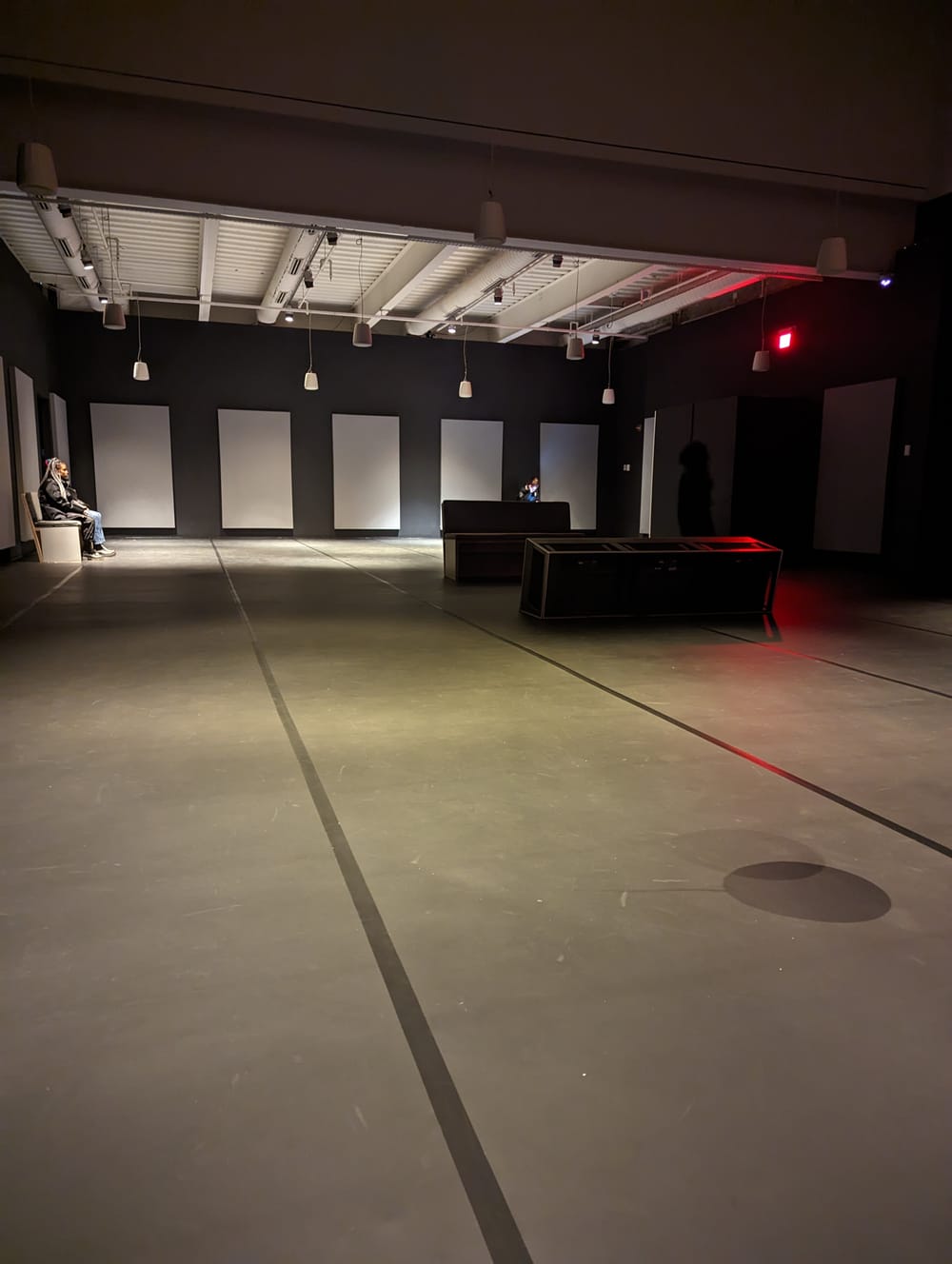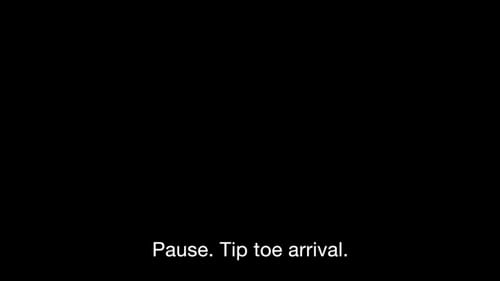Stay in the Loop
BSR publishes on a weekly schedule, with an email newsletter every Wednesday and Thursday morning. There’s no paywall, and subscribing is always free.
Somatic and spiritual
ICA Philadelphia presents Carolyn Lazard’s Long Take

On Friday, March 10, Philly’s Institute for Contemporary Art (ICA) held its season-opening event, premiering two new exhibitions, Swarm by Terence Nance and Long Take by Carolyn Lazard, both on view until the summer. This marks each artist’s first solo exhibition, as well as representing a noteworthy achievement for Black American artists in their 30s.
Upon entering the ICA, you could easily get sucked into the zeitgeist of Swarm, a retrospective of Nance’s interdisciplinary media practice: a particular brand of maximalist visual assemblage and worldbuilding, contained here within the gallery space on the first floor. Swarm was curated by BlackStar’s Maori Karmael Holmes, and, as the title suggests, the work is big, buzzy, and besieging. It also shares a title with a new (but unrelated) trending television horror series.
Usually, the gallery spaces across ICA’s two floors are connected through a ramp that acts as an interlude between exhibits. But this time, the ramp and connected mezzanine area are closed off, requiring instead a complete exit from one dark, enclosed immersive area of art into the starkly white and bright reception area, before accessing the other installation. Rather than a segue, this maneuver acts as a hard reset, a full palate—palette? This is art after all—cleanser. We might lose an opportunity to consider more of a conversation between Nance’s and Lazard’s work, but because these artists have such singular voices and visions, it’s probably best.
Dance we don’t see
After ascending to the second floor, either by freight elevator or a steep series of stairs, visitors are met with the project description for Lazard’s Long Take. It’s an experimental exercise in accessibility by way of an immersive dance performance, in a style known as dance for camera, popularized in the 1960s. Here, to deprioritize sight as the primary means to consume the work, the choreography is instead presented as sound and narration. Drawing from their own experience of living with chronic illness, Lazard’s multimedia work focuses on issues of accessibility, care, and collective responsibility. Given those themes, it’s ironic that grasping Lazard’s concept may be the hardest part of accessing this piece, but you don’t need to fully understand it to experience it.
Enter a dimly lit room. White soundproofing pads line the walls, turning the gallery into a sound studio. Rows of speakers hover from the ceiling. In the middle of the room is a simple bench, fabricated by Lazard, facing a panel of three television screens placed on the floor. No images come across those screens. It’s just words, including the audio description of the unseen choreography, simple stage directions and reactions, and the onomatopoeia of the sounds from the microphones placed on dancer/choreographer Jarron Herman’s body (sounds which hearing visitors also experience from the speakers). There are a couple other benches pressed against the wall around the room.
Sound, touch, and other senses
The setup is sparse, but makes room for a wide range of engagement and interpretation. Subverting the dependency on sight heightens other senses, the most obvious being sound, but also touch, as you feel the vibrations from speakers or the installed dancefloor, or the support of the benches beneath you. Also present is a sixth sense, a spiritual quality imbued and implied by the omnipresent audio, but also the energetic awareness of embodiment (or lack thereof) in the space in relation to each other. This spiritual-somatic connection is deeply, viscerally, and ancestrally ingrained. It evokes traditional African or diasporic religious or healing rituals, in which movement and dance are often central.

Humor and levity are unexpected, but necessary and welcomed, infusions into the space as Lazard takes some liberties with the audio descriptions. They playfully make reference to Mary J. Blige’s signature two-step dance and rapper Nelly’s 2004 song “Flap Your Wings,” where he instructs listeners to “Drop down and get your eagle on, girl!” These nods to popular Black culture and music also make the art a little less esoteric.
Important layers
The immense planning, intentionality, and labor that created each element of this experience—from orchestrating an original dance score and creating original choreography, to the lighting and the scripts—may never be publicly released or acknowledged. It’s all so seamlessly integrated into the final offering that this behind-the-scenes work may seem flattened or erased, but those layers (and the thought and processes behind them) are the very things that make Long Take unique and important, even if not everyone can appreciate that full picture.
What, When, Where
Long Take. By Carolyn Lazard. Free. Through July 9, 2023, at ICA Philadelphia, 118 S 36th Street, Philadelphia. (215) 898-7108 or icaphila.org.
Accessibility
The ICA is a wheelchair-accessible venue. For more information, visit the ICA's accessibility page.
Face masks are strongly encouraged.
Sign up for our newsletter
All of the week's new articles, all in one place. Sign up for the free weekly BSR newsletters, and don't miss a conversation.
 Hanae Mason
Hanae Mason